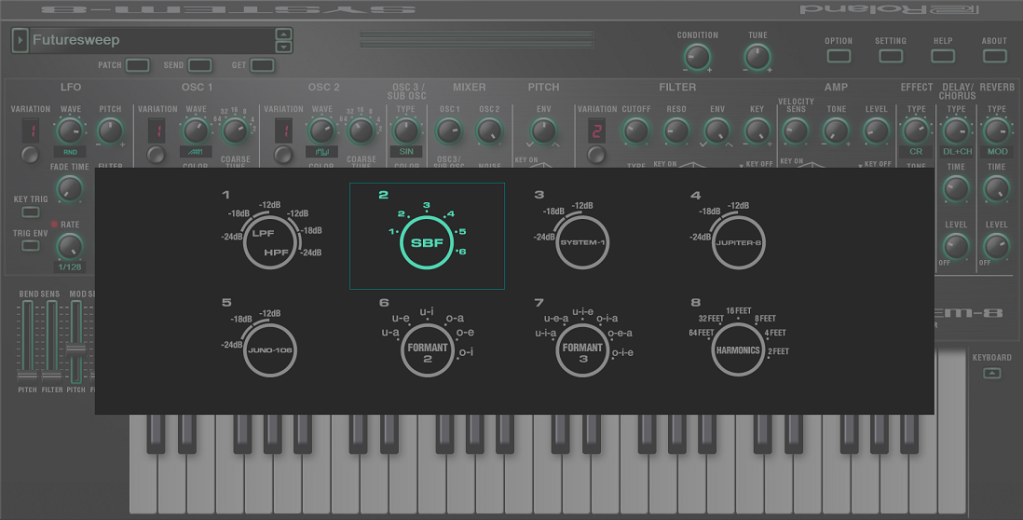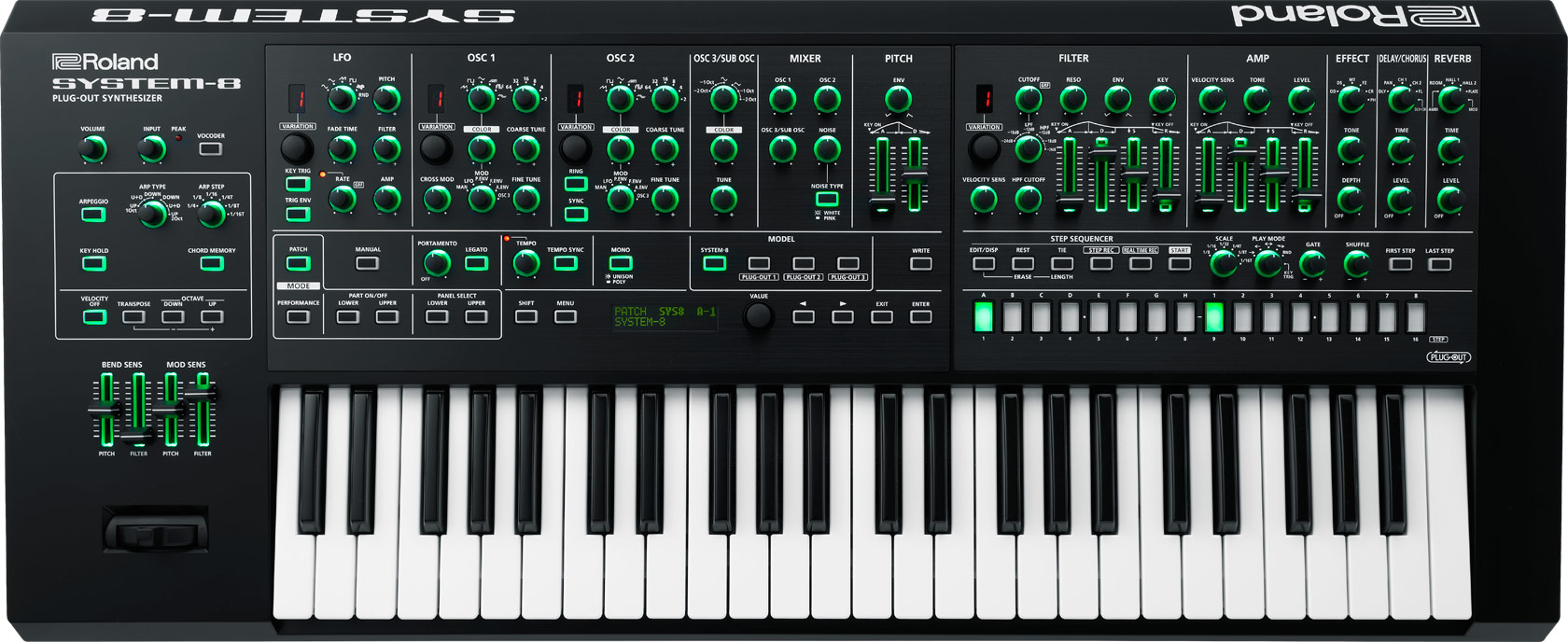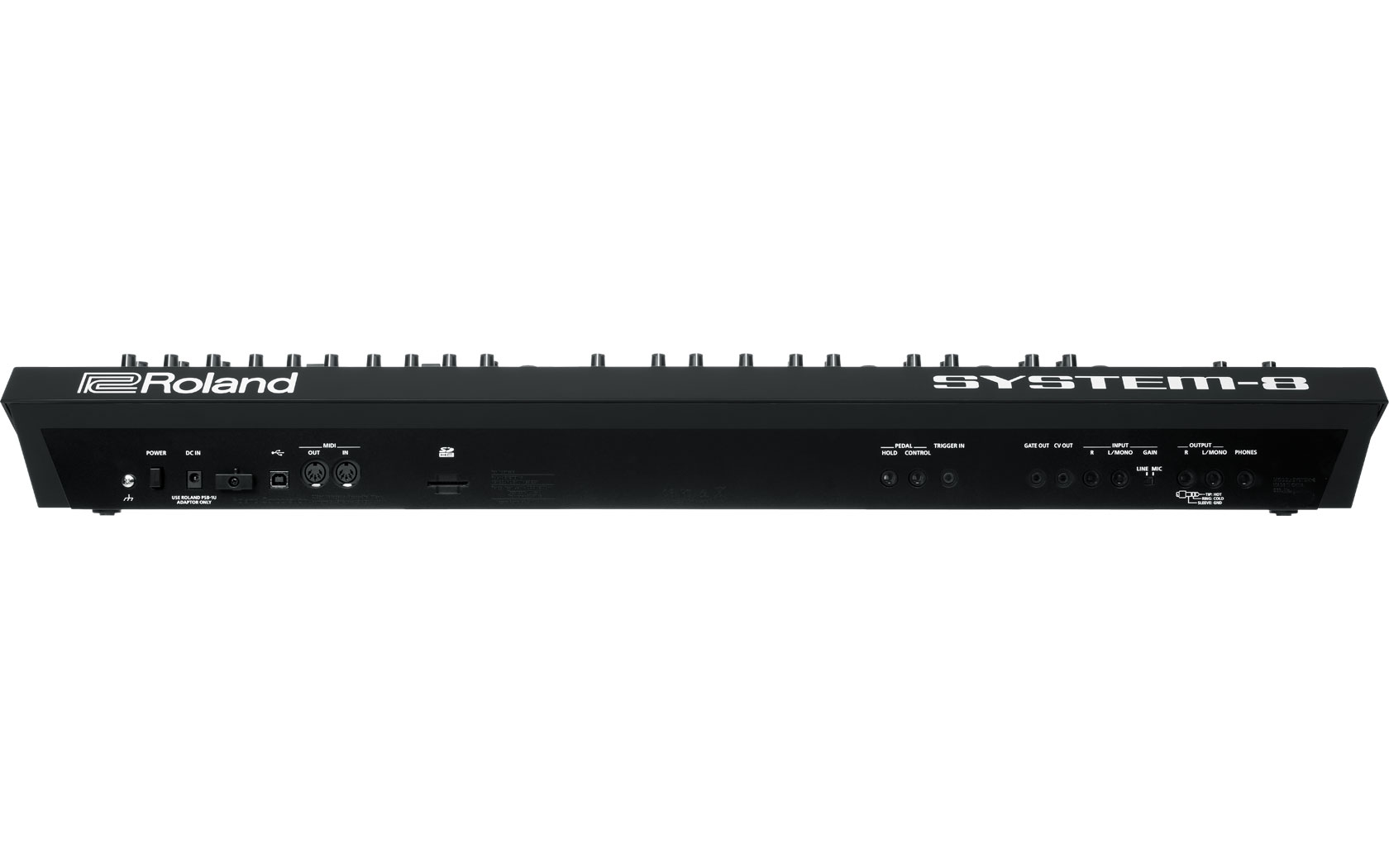Want that new synth feeling, but for free? That’s the hybrid-vintage-modeled-new synth SYSTEM-8 this month from Roland – and we’ve got the sound designer of its new preset library to tell us why we should download it.
Okay, first – the SYSTEM-8. It’s the pinnacle of what Roland did with PLUG-OUT and models of vintage gear, but mashed-up into a new monster synthesizer in hardware and software, all using the circuit modeling (ACB) tech that I love so dearly. Obviously, the hardware isn’t free, but the Roland Cloud plug-in version is free to try now through April 20. You can grab the SYSTEM-8, plus the new Driven patch collection.
Not only do you not need much money, but you don’t need much hard drive space, either – it all clocks in at just a few MB. You do have to install Roland Cloud first, if you don’t have that. But then just go to Library, type SYSTEM in the search box at top so you don’t have to scroll, install SYSTEM-8 first, then once that download finishes, get SYSTEM-8 DRIVEN, too.
Serendipity: Francis Preve is CDM’s wacky neighbor who appears from time to time, and he’s the creator of Driven – hence his signature all over it. And so here’s Francis’ very biased take on why he loves the SYSTEM-8. I always enjoy listening to Fran’s biases, because they tend to be well informed. So it’s a good argument for the download, plus a set of tips on how to use it.
Roland didn’t ask for this – so they’ll wake up to it in Japan, presumably. Opinions of the sound designer only.
I watched too much Cobra Kai lately, so I just did an 80s karate dance around to that music and now I need to go ice my hips. Turning it over to Fran: -PK
Francis Preve on SYSTEM-8
It’s rare that a digital synth will steadily remain in production for close to five years, but the Roland System-8 hit that anniversary this year. While there’s well-deserved attention given to the new Jupiter-X and Xm series (which, frankly are fantastic) the System-8 still clocks in at just under $1500, making it a perfect first synth for diving into professional hardware or adding a genuinely powerful four-octave controller as your bedroom studio grows.
Thanks to Roland’s steady stream of firmware upgrades—and the ability to sideload Roland’s up to three top-notch Plug-Out emulations of their iconic analog gear, the System-8 is a synth that can remain fresh and engaging long after the “new gear dopamine” wears off.

It may seem strange to sing the praises of a synth that’s not old enough to be vintage and not new enough to be trendy, but having had it in my studio since its release, it’s clear why the System-8 has such longevity.
Here are eight tips for this evergreen synth – some applying to both hardware and software. The software version is available on Roland Cloud, so you can easily test drive it there to check out the features that keep it one of the primary go-to’s in my studio.
Software + hardware features
1. It gives you sound design options that rival modular rigs. This synth, like a well-stocked Eurorack rig, lets you mix and match oscillator types, filter types, and apply audio-rate modulation to various destinations – but simply turning knobs. What’s more, the sequencer (hardware version only) can be applied to multiple parameters without including note data (more on that below). It’s also polyphonic and has a save button.
[Ed. Francis stops short of this but I’ll go on – there are enough modulation source selections here to basically make this a semi-modular, and there’s cross-modulation and ring mod, to boot. I recently wrote up the SYSTEM-100 for Roland, and while that’s the one that has patch cords on it, there are actually just as many modulation options here. -PK]

2. Waveforms galore. Each of the two primary oscillators can be set to one of four modes—independently—and every mode has six options. In analog mode, you have the holy trinity of saw, square, triangle, and “super” stacked versions of those. In the second oscillator mode, there are six digital options that range from logic operations to a version of the 808 cowbell. The final two oscillator modes deliver impressive FM results, with mode 3 offering iconic FM like tubular bells and “knocking bass” —while mode 4 provides complex multi-operator FM for dubstep, techno, and EDM results. From there, the System-8 includes a Color parameter that does tricks like PWM on the analog waves or modulator depth on the FM types. As if that wasn’t glorious enough, the Color function can be modulated by things like envelopes, LFOs, or even the sub-oscillator.


3. Filter types. The filter can function as one of eight different filter types, with an additional non-resonant high-pass filter on each. In addition to its AIRA resonant low-pass/high-pass mode, the System-8 also offers models of the Juno and Jupiter-8 filters, two formant/vowel filters, the “Sideband” filter from the original V-Synth (which is reminiscent of a comb/flange processor), and even the filter model from the original AIRA System-1. There’s also a “Harmonic” filter that’s cool for feedback effects. The various LPF/HPF modes include three roll-off slopes for each (12, 18, and 24). Taken together, that’s well over 30 discrete options, not including the benefits of the added HPF.


4. Audio-rate via sub-oscillator. The System-8 sub-oscillator is also more capable than many others. For starters, you can add a sine or triangle at the fundamental or up to two octaves lower. The Color parameter makes another appearance for fine-tuning either waveform. There’s also a secondary tuning control that covers up to an octave in either direction—in cents—for interval tuning or detuning. But the most interesting feature is that it can also be used for audio-rate modulation of the Color parameter for very unusual and (depending on the tuning) sometimes harsh results.
Hardware features
5. Step-sequencing. The onboard step-sequencer has a clearly X0X vibe, with buttons for each step. It’s most often demonstrated as a cool and versatile musical pattern sequencer using notes, but here’s the twist: You can turn it on and twist knobs without playing notes and those adjustments will be recorded. You can also hold a button and adjust a knob for Elektron-style parameter lock step patterns. So, in this manner, it can be used as a very sophisticated modulation source with a little forethought.
[Ed. There’s no step sequencer in the software, but check the very capable arp section. It would be cool if Roland did stick a software recreation of the step sequencer in there, though, as they’ve done with the drum machines in Roland Cloud.]

6. Vocoding. There are audio inputs on the back for routing signal into the System-8, but on the back is a Line/Mic switch that activates a simple pre-amp so you can plug in a microphone for vocoding your patches. Yes, a vocoder is baked into the architecture as well.
[Ed. — and it would be really, really nice to see effect versions of Roland Cloud instruments generally. Right now they do lack audio in, meaning that’s one reason to plug in the actual hardware.]
7. CV/gate outs. Also on the back are dedicated CV and gate outs that send real voltages to your other modular gear and/or vintage synths.

8. Plug-outs. So far, all I’ve covered is the AIRA engine in the System-8, which is so comprehensive that you might have forgotten that the hardware is 100% compatible with the Plug-Out synths on Roland Cloud. [Ed.: Reminder – this means that you can use the SYSTEM-8 hardware to host other models from Roland Cloud, even with it unplugged from your computer. In fact, the SYSTEM-8 is probably the synth from Roland to get if that’s your notion.]
Currently, I have the standard set of Jupiter-8, Juno-106, and JX-3P, but over the years, I’ve swapped out the JX for the SH-101, just to keep things interesting. Not every Roland Cloud synth is Plug-Out compatible, but many of the analog classics are. So in addition to the expansive synthesis engine described above, you can also add some very credible vintage gear to the synth. From there, you can also split or layer the Plug-Outs—so if you want to have an SH-101 bass on the left and a Jupiter pad on the right, sure thing, no problem.
When the System-8 first came out, I often said it was a “desert island” synth. Five years later, the only thing I’d change is that spelling. “Dessert” is more like it.
SYSTEM-8 Driven Patch Collection Now Available
https://rolandcloud.com/catalog/aira/system-8